Removal Procedure
- Drain the coolant from the radiator. Refer to Draining and Filling Cooling System .
- Remove the air cleaner assembly. Refer to Air Cleaner in Engine Controls.
- Remove the upper fan shroud. Refer to Fan Shroud Replacement .
- Remove the lower fan shroud. Refer to Fan Shroud Replacement .
- Disconnect the radiator hoses from the radiator. Refer to Radiator Hose Replacement .
- Disconnect the transmission oil cooler lines from the radiator. Refer to Oil Cooler Hose/Pipe Replacement in Automatic Transmission.
- Disconnect the engine oil cooler lines from the radiator. Refer to Oil Cooler Line Replacement .
- Disconnect the coolant recovery reservoir hose from the radiator filler neck.
- Remove the radiator grille. Refer to Radiator Grille Replacement in Sheet Metal.
- Remove the four bolts attaching the A/C condenser to the radiator. Refer to Condenser in Heater, Ventilation and Air Conditioning.
- Remove the radiator.
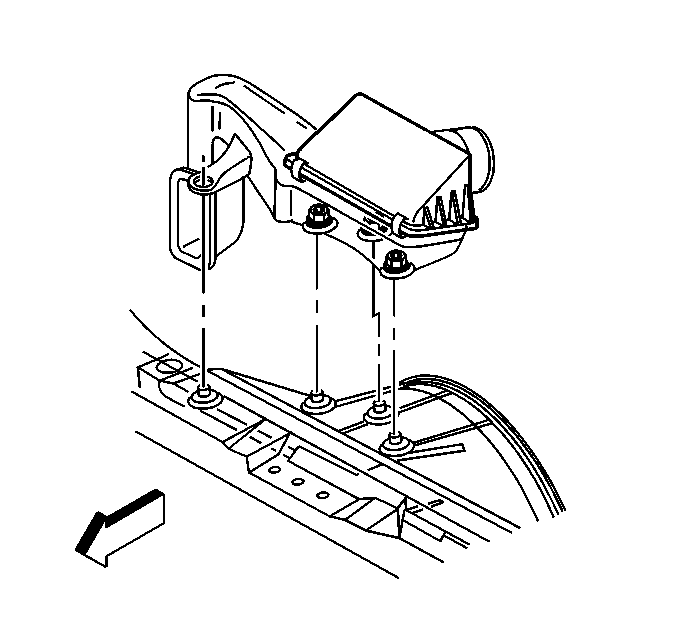
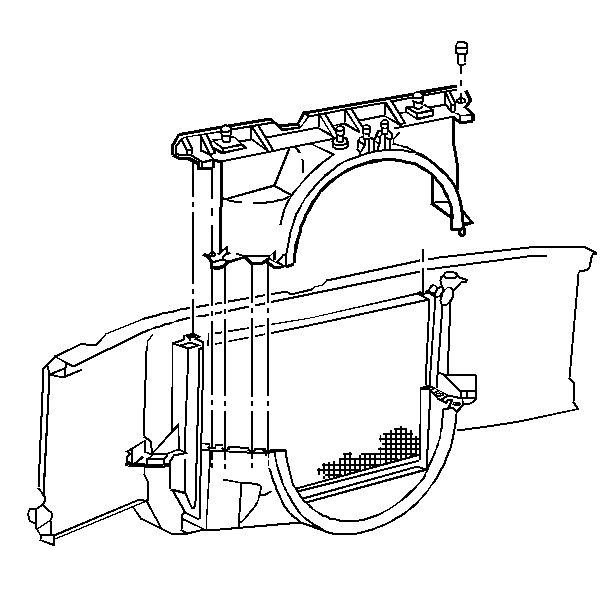
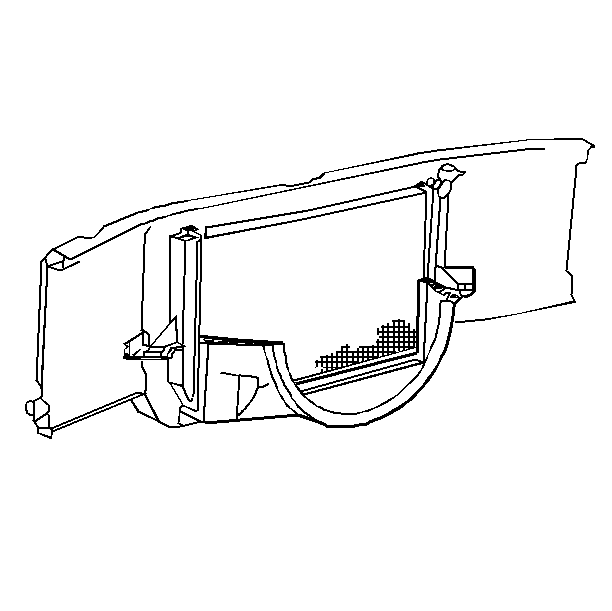
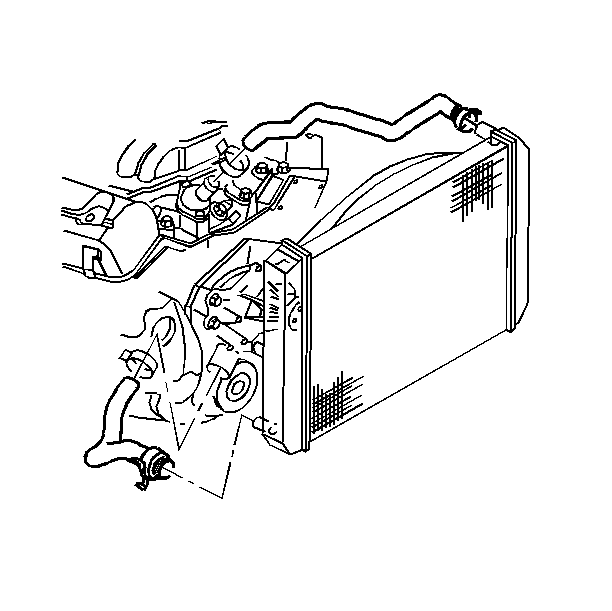

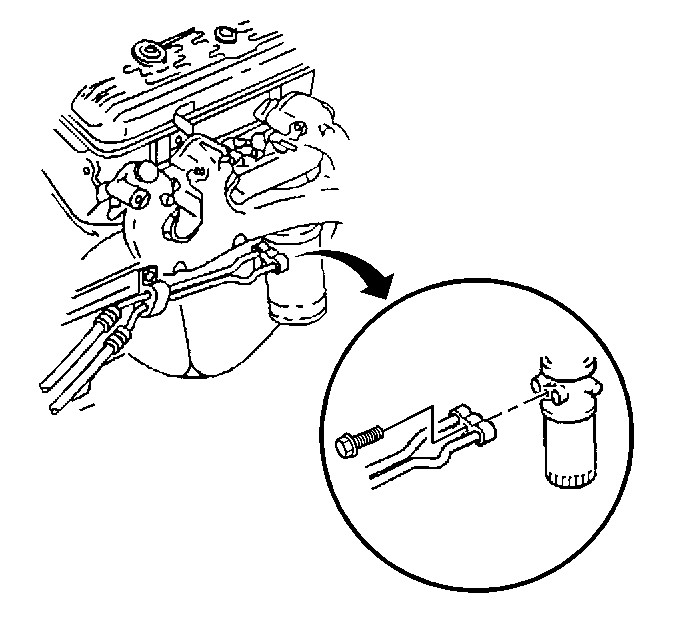
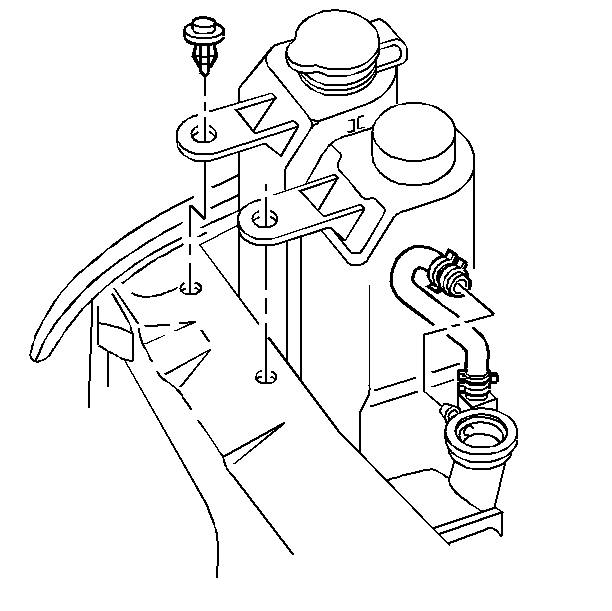

Installation Procedure
- Install the radiator.
- Install the four bolts attaching the A/C condenser to the radiator. Refer to Condenser in Heater, Ventilation and Air Conditioning.
- Install the radiator grille. Refer to Radiator Grille Replacement in Sheet Metal.
- Connect the coolant recovery reservoir hose to the radiator filler neck.
- Connect the engine oil cooler lines to the connector fittings. Refer to Oil Cooler Line Replacement .
- Connect the transmission oil cooler lines into the connector fittings. Refer to Oil Cooler Hose/Pipe Replacement in Automatic Transmission.
- Connect the radiator inlet hose and the outlet hose to the radiator. Refer to Radiator Hose Replacement .
- Install the lower fan shroud. Refer to Fan Shroud Replacement .
- Install the upper fan shroud bolts and the upper fan shroud. Refer to Fan Shroud Replacement .
- Install air cleaner assembly. Refer to Air Cleaner
- Refill the coolant. Refer to Draining and Filling Cooling System .
- Check engine oil fluid level. Fill to proper level.
- Leak test the cooling system. Refer to Cooling System Leak Testing .
- Start engine. Run vehicle to normal operating temperature. Check transmission oil fluid level. Fill to proper level. Check for oil and transmission fluid leaks.


Notice: Do not reuse the existing retaining clips removed from the cooler line connector fittings. The retaining clips being put into the cooler line connector fittings must be new.
Notice: Make sure the retaining clip engages all three slots in the connector fittings. Failure to properly install the connector clips could cause the cooler lines to come loose and cause damage to the engine and/or the transmission.


Notice: Two sealant pellets GMSPO part no. 3634621 must be added to the radiator whenever the cooling system is drained or refilled with fresh coolant. Failure to use the correct sealant pellets may result in premature coolant pump leakage. Do not add the pellets to the coolant recovery bottle, this may prevent the coolant recovery system from operating properly.



Tighten
Tighten the upper shroud bolts to 15 N·m (11 lb ft).
Refer to
Notice: Use the correct fastener in the correct location. Replacement fasteners must be the correct part number for that application. Fasteners requiring replacement or fasteners requiring the use of thread locking compound or sealant are identified in the service procedure. Do not use paints, lubricants, or corrosion inhibitors on fasteners or fastener joint surfaces unless specified. These coatings affect fastener torque and joint clamping force and may damage the fastener. Use the correct tightening sequence and specifications when installing fasteners in order to avoid damage to parts and systems.

